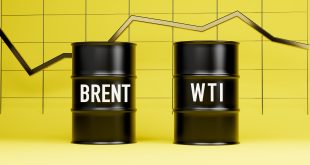The past week has witnessed a notable rebound in equity markets, with the S&P 500 and the Canadian TSX surging over 6.5% and 5%, respectively, from their August 5 lows. This resurgence appears to be primarily driven by two key factors: a continued moderation in inflation and a resilient economic performance, particularly in the United States.

Dual Impact of Softer Inflation and Economic Strength
The recent release of inflation data has been a boon for market sentiment. Both the U.S. Consumer Price Index (CPI) and Producer Price Index (PPI) for July came in lower than anticipated, suggesting a gradual cooling of inflationary pressures. This trend is echoed in Canada, where CPI has also moderated to its lowest point of the year.
Concurrently, the U.S. economy continues to demonstrate resilience. While there are signs of cooling, the overall picture is far from a precipitous downturn or recession. Robust retail sales and steady jobless claims underscore this underlying strength. In contrast, the Canadian economy has shown signs of softening, although it remains in positive territory with year-over-year GDP growth hovering around 1%.

Implications for Monetary Policy
This backdrop of softer inflation and a cooling but still-positive economic landscape sets the stage for potential interest rate cuts by central banks. Market participants are increasingly anticipating a rate reduction by the Federal Reserve as early as September. The Bank of Canada is also expected to continue its easing cycle, with possibly one or two more cuts before the end of the year. The upcoming Jackson Hole Symposium will be closely watched for any signals from Fed Chair Jerome Powell regarding the timing and magnitude of the first rate cut.

A Deeper Dive into Inflation Dynamics
While headline inflation figures are trending downwards, a more granular analysis reveals a mixed picture. While prices for certain categories like food, apparel, and automobiles have declined, other areas such as shelter and motor vehicle insurance continue to exhibit elevated inflation. The shelter component of CPI has been particularly persistent, but it is expected to gradually align with softer real-time data in the coming months. Similarly, the rapid increase in insurance costs is unlikely to be sustained at the current pace. These potential slowdowns in shelter and insurance inflation could further contribute to a moderation of overall price pressures.
In Canada, the combination of rising unemployment and softening GDP growth suggests that inflation will gradually decline towards the Bank of Canada’s target of 2%. The recent market rally is a testament to the positive impact of cooling inflation and a resilient economy. As central banks embark on their rate-cutting journeys, investors will be keenly focused on the pace of disinflation and the trajectory of economic growth. While challenges remain, the current environment appears to be conducive to a more favorable market outlook.
U.S. Economy Shows Resilience Amidst Recession Fears
Recent economic indicators have offered some relief from growing concerns of a U.S. recession. Earlier in August, fears were heightened by a weaker-than-expected jobs report, which sent the market into a downturn. However, subsequent data has painted a more optimistic picture. Retail sales surged in July, defying expectations and signaling a robust consumer. This broad-based spending increase, particularly in the automotive sector, contrasts sharply with Canada’s declining retail sales.
Additionally, the ongoing decline in weekly jobless claims has eased concerns about a rapidly deteriorating labor market. While the overall employment picture remains uncertain, these figures suggest a degree of stability.
The upcoming nonfarm-jobs report for September will provide crucial insights into the labor market’s health before the Federal Reserve’s policy meeting. Both the U.S. and Canada will release unemployment data on September 6th.
These positive economic developments have contributed to a more hopeful outlook, though the overall economic landscape remains complex and subject to change.
Central Banks and Markets: A Shifting Landscape
Recent economic data has injected new uncertainty into the trajectory of central bank policies and, consequently, market trends. Softer inflation figures and a more cautious labor market suggest the Federal Reserve (Fed) may initiate interest rate cuts as soon as its September meeting. While an aggressive 0.50% cut was previously speculated, current economic conditions likely warrant a more gradual 0.25% reduction.
The Bank of Canada is expected to follow suit with additional rate cuts this year, aiming for a neutral interest rate around 3%. The upcoming Jackson Hole symposium will be a crucial stage for the Fed to provide further clarity on its policy direction. Fed Chair Powell’s speech and other comments from Fed officials will be closely watched for hints about the September meeting and the overall economic outlook.
Market Implications
Markets have responded positively to easing inflation and stronger-than-expected economic data, with a notable rebound from August’s sell-off. The technology and growth sectors, which were hit hardest during the downturn, have led the recovery. As interest rate cuts approach and inflation continues to moderate, a broader market rally is anticipated. Investors may benefit from diversifying portfolios across growth and value stocks. Large-cap and mid-cap U.S. equities, particularly in sectors like industrials and utilities, are promising.
Historically, a combination of interest rate cuts and a resilient economy has proven favorable for markets. While short-term volatility is expected, especially during the seasonally weak September and October, long-term prospects remain optimistic. Overall, the current economic environment presents opportunities for investors to capitalize on market fluctuations and position portfolios for sustained growth.
What can Powell’s Speech do for Gold Prices?
Gold prices reached a new peak on Friday, driven by a combination of factors. A weakening US dollar, fueled by growing expectations of an interest rate cut by the Federal Reserve in September, significantly boosted gold’s appeal. Simultaneously, escalating tensions in the Middle East increased safe-haven demand for the precious metal.

Traders and analysts alike highlighted these factors as key contributors to gold’s surge. The metal’s performance was further enhanced by recent data suggesting a potential slowdown in inflation, which could pave the way for the Fed to adopt a more accommodative monetary policy. While gold captured the spotlight, other precious metals exhibited mixed performance. Silver experienced gains, while platinum and palladium declined.
As investors look ahead, the upcoming Jackson Hole economic symposium, where Fed Chair Jerome Powell will deliver a speech, is expected to provide crucial insights into the central bank’s future monetary policy direction. Gold’s record-breaking performance reflects a confluence of economic and geopolitical events, making it a sought-after asset for investors seeking both returns and protection.
 Noor Trends News, Technical Analysis, Educational Tools and Recommendations
Noor Trends News, Technical Analysis, Educational Tools and Recommendations





